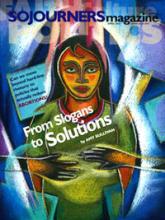In just 100 days between April and July 1994, an estimated 800,000 to 1 million people were brutally slaughtered in Rwanda. Most were Tutsis, a minority group, targeted by Hutu extremists for extermination in a genocidal campaign with meticulous planning and sophisticated use of hate propaganda.
I came to Rwanda a decade after the genocide, and I saw a beautiful land and a lovely people, whose smiles almost hid the haunted look behind their eyes. But as they opened their hearts to me and shared their stories, as they took me around the countryside, I glimpsed the horror that still stalks this wounded nation like a wraith.
The hand of the Lord came upon me, and he brought me out by the spirit of the Lord and set me down in the middle of a valley; it was full of bones. He led me all around them; there were very many lying in the valley, and they were very dry” (Ezekiel 37:1-2).
I visited Rwanda in December 2004 to participate in a World Council of Churches consultation. On the first day we drove into the countryside to the Catholic church of Ntarama. There, on April 15, 1994, 5,000 men, women, and children were massacred while they prayed to God for deliverance. It never came.
When I visited, the site was lovingly festooned with purple and white ribbons, a symbol of the care lavished upon the church now as a sacred resting place for the dead and a memorial for the living, lest we forget.
As we walked in we faced shelves holding row upon row of skulls—hundreds of them. Children’s skulls, adult skulls, whole skulls, and partial skulls. One had a nail still sticking out of the top; another had been draped with a crucifix and a rosary by some stricken witness.
Read the Full Article
